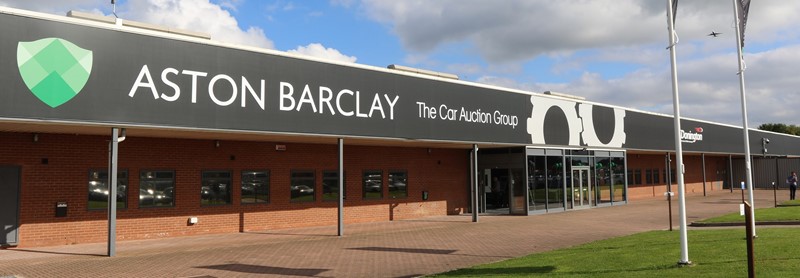In just four years, Aston Barclay has transformed from a modest family-run auction business with four sites to become a major player in the fleet and leasing remarketing sector.
Relentless investment in technology, spurred by a desire to provide buyers with greater clarity and visibility of its stock, has evolved the businesses into one which is at the forefront of digital remarketing.
It now operates from six locations, has contracts with multiple FN50 leasing companies and operates its own digital remarketing platform.
The coronavirus pandemic served as the perfect test-bed for Aston Barclay’s remote-buying services and within weeks of the country going into lockdown, the firm had already returned to trading using its live online bidding platform.
Martin Potter, the company’s newly appointed group managing director (pictured), believes that fleet and leasing remarketing will never be the same again.
He says: “Covid has helped our industry move to where it needed to be. Buyers were starting to realise the value of online proposition through our detailed inspections, imagery and assured products.
“Now, I don’t see any reason why we would return to driving cars through auction halls for fleet, leasing and manufacturers. There is no need to return when the product is so well represented using that technology” – Martin Potter
It’s not the end for the traditional car auction though. Aston Barclay still allows buyers on-site to view stock ahead of the sale, which is then conducted using live video technology.
Cars will also continue to be collected, processed and stored by the remarketing firm for the foreseeable future. As Potter says, despite the technology already being able to support ‘upstream selling’, few of Aston Barclay’s customers have the desire or capability to store and prepare cars themselves.
He adds: “There is investment and we are working with customers to do more upstream selling, using tech to carry out self-inspections. That is starting to happen.
“In future, there will be more upstreaming and more digitalisation of the business. We will look to market those products to closed groups, such as where manufacturers want to support their dealer networks with stock.”
For dealers buying older part-exchange stock, Potter says there will still be physical auctions at sites such as Donnington (pictured below) as the digital model doesn’t quite suit that market.

Digital transition
 The company’s digital revolution started back in 2016, led by the then managing director, Glenn Scarborough, the son of Aston Barclay’s founder, Leslie (Les).
The company’s digital revolution started back in 2016, led by the then managing director, Glenn Scarborough, the son of Aston Barclay’s founder, Leslie (Les).
He oversaw a £7.5 million investment in a new vehicle inspection system, which was driven by the industry’s desire for more transparency.
A year later, in June 2017, the company was subject to a management buyout, which saw Neil Hodson take the helm as CEO and secure a multi-million pound investment from Rutland partners.
His strategy focused on expanding the company’s fleet business, while also developing its digital buying technology.
The Buyer App launched a month later allowing buyers to bid for vehicles being sold in physical auctions remotely from their smartphones.
Within eight months, more than £5m-worth of cars had been sold via the app and in July 2018, the company hosted its first virtual auction.
This development proved a crucial stepping stone for the business when the coronavirus pandemic hit, as a number of businesses still wanted to dispose of vehicles.
“During the lockdown period, some of our competitors were closed completely. Because of our technology we sold 12,000 cars during that period. We had the right type of products to keep trading,” says Potter.
“As a result, we’ve secured a new contract with Zenith. We’ve also resigned a longer contract with Vantage and VWFS has started to trial us based on what they saw us doing during the pandemic.”
Management reshuffle
In order to improve its customer service, Aston Barclay recently underwent a management reshuffle.
Most notably, Hodson stepped down from his position as CEO to take a consultative role with the business.
Potter, meanwhile, who joined in 2011, is now in charge of everything related to customer service, both vendor and buyer.
“We want to continue our customer excellence from the team; I think that is our USP – how we approach the customer. We try to work on creating longer-term partnerships and that’s what the restructure was all about,” Potter says.
Benjamin Crawford has joined the business as its new head of marketing. He reports to Potter and is responsible for making sure the business has the right marketing strategy for its sales team but also to ensure it is growing its buyer base.
Potter adds: “It’s about making sure that we are there for our customers and making sure we focus on our products. Innovation needs to be based on what our customers’ needs are, so we are ahead of the game. We have to stay close to our customers and understand what their businesses need.”
Market performance
As dealerships re-opened, the used car market boomed, delivering a record July for Aston Barclay. Throughout the summer, prices remained high and demand strong.
Used prices began to soften slightly in the first two weeks of October, however, and Aston Barclay believes these are the first signs that Q4 will see the market returning back to some normality with prices and demand stabilising and supply continuing to gradually rise.
“The market for used cars between 12 and 60 months old was unstoppable in Q3 which is why late and low and fleet prices were so high, but we witnessed a change in buyer attitudes early in October” – Martin Potter
The market saw changes during October and there are still a number of unknowns that may affect consumer and dealer confidence during the balance of Q4. Among them, the implications of a second national lockdown, repossessions, voluntary terminations flooding in and, ultimately in Q1 2021, the impact of Brexit.
“Any one of these could affect dealer and consumer confidence. However, we feel prices will remain healthy into 2021 as new car lead times keep extending. This means a flood of used cars hitting the market will be avoided as ex-business and personal leasing contracts are extended due to new car delays,” Potter adds.
Prices for used commercials rose by 26% between January and October and the LCV market shows no signs of slowing in Q4.
Aston Barclay is predicting the boom will last into 2021 as businesses adapt to the pandemic and demand for delivery services continues to grow.




















Login to comment
Comments
No comments have been made yet.